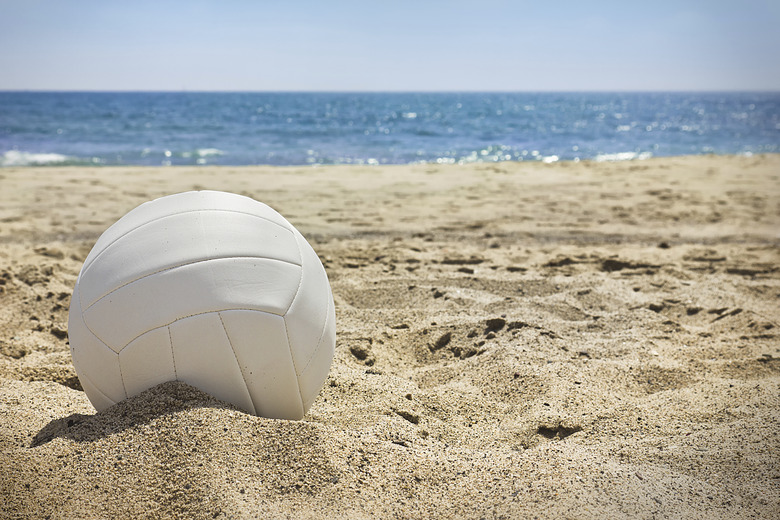Volleyball Science Fair Ideas
If you have a volleyball in your garage, you have the makings of an interesting science fair project. Volleyballs are useful components of models — paint one orange and use it as the sun in a replica of the solar system, or make a globe by carefully painting the Earth's oceans and continents. Volleyballs are also useful for demonstrating Newton's Laws of Motion and the way air pressure works.
Objects in Motion
Objects in Motion
Use volleyballs to demonstrate Newton's Law of Inertia, which states that an object in motion will remain in motion unless acted on by an outside force. Use different objects to stop the forward motion of a volleyball and discuss their effects. For example, the concrete gym wall will have a different effect on the volleyball's movement than a stack of pillows. Examine Newton's second law of motion and the conversion of potential energy into kinetic energy using a volleyball and tennis ball. Drop each individually and measure the height of their bounces with a meter stick. Then, drop the balls at the same time, with the tennis ball on top of the volleyball and measure the bounce. The tennis ball will bounce higher because it absorbs energy from the volleyball.
Under Pressure
Under Pressure
Determine the optimal pressure for an inflated volleyball by using different volleyballs inflated to different psi (pounds per square inch). This can be measured using a pressure gauge as you inflate the balls. Compare their performance by measuring the height that they bounce to when dropped from a consistent height and the distance one person is able to hit the ball with an overhand serve.
Cite This Article
MLA
Cairoli, Sarah. "Volleyball Science Fair Ideas" sciencing.com, https://www.sciencing.com/volleyball-science-fair-ideas-6384673/. 24 April 2017.
APA
Cairoli, Sarah. (2017, April 24). Volleyball Science Fair Ideas. sciencing.com. Retrieved from https://www.sciencing.com/volleyball-science-fair-ideas-6384673/
Chicago
Cairoli, Sarah. Volleyball Science Fair Ideas last modified August 30, 2022. https://www.sciencing.com/volleyball-science-fair-ideas-6384673/
